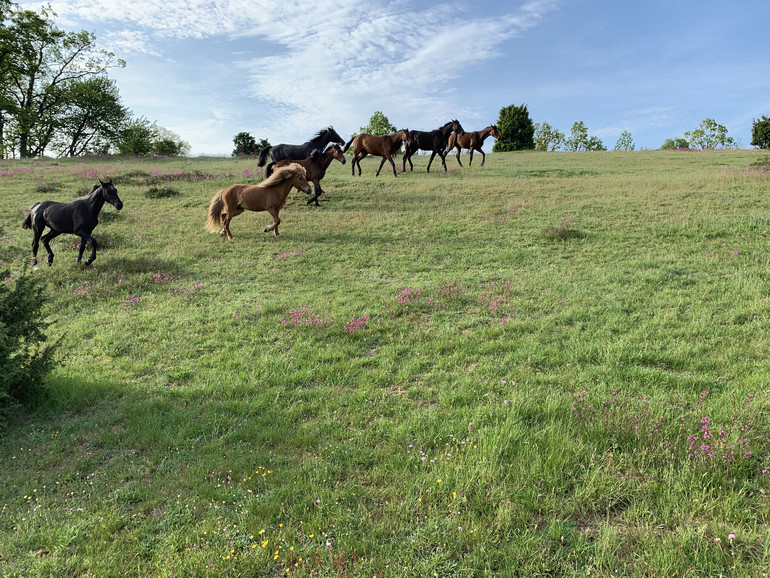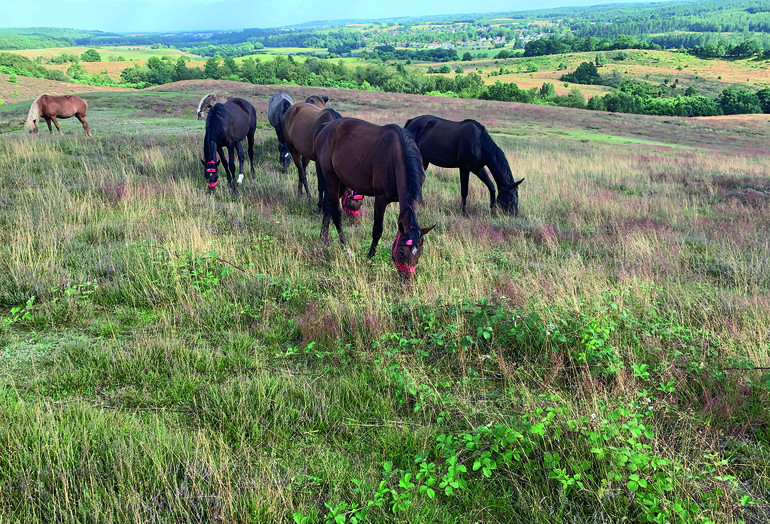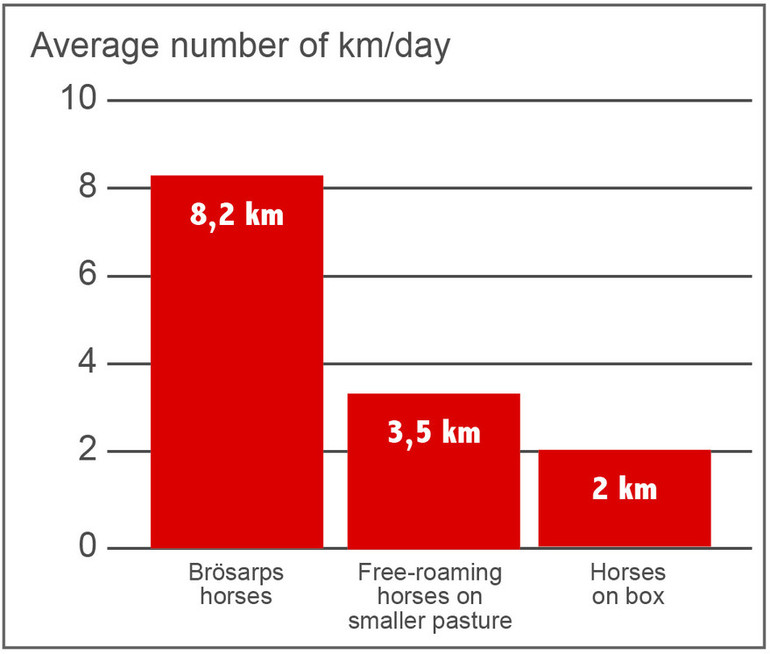Text © World of Showjumping
Back in May this year, the non-profit organization Hästen i Skåne (The Horse in Skåne), launched a new project in the south of Sweden together with 2017 European Champion Peder Fredricson, his father Ingvar Fredricson and Magnus Skulason – a multiple World Champion with Icelandic horses.
Releasing a herd of one-and-two-year-old Swedish-bred jumping horses together with Icelandic horses on a large, hilly area stretching over 70 hectares, the idea of this pilot-project was to see how the 25 young horses developed when moving freely in a diverse terrain. The herd’s physical condition and development has been closely monitored, through daily visual inspection as well as around-the-clock studies of selected horse behaviour with the HoofStep system.
Three months into the project, a progress report has been released and reads as follows:
“Summary of partial results
At this stage of the study, we’ve observed that:
● The horses at Brösarp show more than twice as much activity as the reference horses in the smaller free-roaming designs and more than four times as much as those in the box stall/paddock design. “Activity” is defined as a collective measure of all of each horse’s movements, which, in addition to the horse’s maintenance level, consumes energy.
● The horses at Brösarp travel a distance corresponding to horses in the wild, averaging 8 km/day. The reference horses in the small free-roaming design move about half as far during the day (with a setup that requires them to move frequently—between water, feeding, and resting areas, for example). The reference horses in the box/paddock design move a fourth as much, about 2 km per day. In order for the reference horses in the smaller free-roaming design to reach the activity level of the horses at Brösarp, they would have to be exercised approximately 1.5 hours on hilly terrains in all gaits.
● The horses at Brösarp and the reference horses all chew on average about 11 hours / day, which is close to the 14-18 hours that horses in a wild/feral natural state devote to both seeking food and moving. However, the reference horses do not show as much activity and movement to seek food as the horses at Brösarp.”
Furthermore, the progress report concludes:
“These primary results* suggest that horses need large, hilly pastures for natural movement similar to horses in a wild/feral state. Horses kept in smaller pastures need to be worked at least 1.5 hours to reach an equivalent movement level. Horses kept in box stalls with daily access to pasture must be worked considerably more than that.
Our work indicates that horses kept in smaller free-roaming pastures and in box/paddock designs consume the same amount of food but expend far less energy. If the objective is to manage horses according to conditions consistent with their natural ethology, this could be a point of further investigation and reflection.
A current debate concerns the detention of horses in confined areas leading to too little movement. This pilot study is scheduled to continue for a few more months; it will add the measure of energy consumption as a further focal area.”
Peder Fredricson, one of the contributors to the project, comments to World of Showjumping: “I’m happy the project is going well. I think it’s the way to bring up young horses to become strong athletes.”
The overall goal of this project is to enable Sweden’s unique land resources for natural horse breeding to develop long term to a significant competitive advantage. Ultimately aiming to produce sustainable competition horses, the project will continue to collect data looking to increase the size of the herd in 2020.











